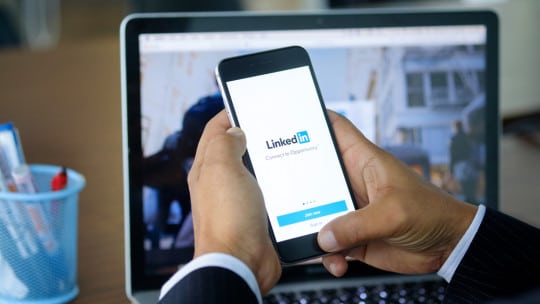
[Editor’s Note: LinkedIn currently seems to be all the rage for those in business and communication. PRNEWS decided to create a series on LinkedIn for those who want to expand their knowledge and experience using the platform. Today’s piece highlights best practices for livestreaming with LinkedIn Live.]
LinkedIn may be known for networking and job listings, but it also provides an intuitive platform for all things thought leadership and personal branding. LinkedIn Live, an opportunity to livestream events, webinars, lectures, interviews and the like, provides an easy method for streaming to your direct audience and beyond.
PRNEWS created its own LinkedIn Live series, called PRNEWS Live, in 2020 during the start of the COVID pandemic. The team wished to connect with its audience during a very stressful and uncertain time for communicators, allowing for a professional arena when all in-person live events and conferences were canceled.
Now, PRNEWS Live continues on, three years later, hosting conversations with top leaders and innovators in the communication industry. Based on our experience, we’ve provided several steps for best practices.
Ask Yourself Why
Why do you want to utilize LinkedIn Live? If you are a B2B organization, are you looking to connect with potential consumers? Is it a unique way to deliver press conferences and information? Do you want to develop an executive as a thought leader? Much like when launching any new social media account for your brand, it’s important to establish a mission and goal, especially because it will require resources and some elbow grease to get started.
Find a Good Third-Party Streaming Platform
LinkedIn Live does not have its own streaming capabilities, so you have to connect your page to a third-party live streaming platform. While this may sound too difficult or provide anxiety for those who are technically-challenged, it’s actually a useful way to create a library for broadcasts and organize potential speakers and dates.
A good option for LinkedIn is Streamyard, which connects directly to LinkedIn and your specifically-created LinkedIn events. LinkedIn posts a list of good options here, which also includes Vimeo Live, Restream, Wirecast and others. It’s a good idea to secure an option that saves your recordings in a cloud, so you can go back, download and edit video for clips if needed.
Scheduling is Important
Just like any other editorial project, it’s important to decide on a cadence when utilizing LinkedIn Live. Some brands aim for once a week. Some once a month. It all depends on the type of content you wish to share and the bandwidth of your team. It’s definitely important to schedule any guests and topics several weeks in advance, so you can go over questions and content with them to prepare for any broadcasting.
Forgo the Fake/Branded Backgrounds
Keep it simple. Especially when you have more than one guest on, having varied backgrounds, or even worse, someone with a green screen who suffers from the odd floating livestream head, can be distracting for the viewers. Have everyone just keep their regular background or a curtain behind them in a single color if you can.
Promote, Promote, Promote
You can create the LinkedIn Live event ahead of time and invite up to 1,000 of your personal connections. However, doing that alone, especially on an increasingly crowded platform like LinkedIn, may not get your event circulating enough. Make sure to share the event link on other social media platforms such as Twitter, Facebook or Instagram, as well as in e-newsletters or digital advertisements.
Look into Your Audience through Leads
When you create your event, LinkedIn will have an option to have viewers sign up using their personal contact information (e-mail) to RSVP. This is something you may want to try after several months of conducting LinkedIn Lives—after you’ve gained a steady audience and brand recognition.
However, when this is enabled, you will also have to share a company policy privacy link, so be ready to work with legal to iron out those details.
Be Casual
The beauty of LinkedIn Live is that while it does have the option to schedule pre-recorded videos, the instant broadcasting and more relaxed nature of the platform can garner a newer audience. This is not a formal webinar.
Much of LinkedIn Live is conversational content surrounding trending topics. The magic lies in the adaptability and comfort of the host, much like in any broadcast, who looks to bring people in to show them something they can hopefully learn from.
Plan Ahead
While LinkedIn Live can be casual, it’s also important to keep it rolling. People’s time is precious and they don’t want to be watching a 60-minute conversation on their phone or laptop while they have other things going on. A prime amount of time for a good LinkedIn broadcast is around 15 to 25 minutes.
When enough people watch live, your followers will receive a notification on LinkedIn. Write out an outline with talking points or questions for guests ahead of time. And always plan for at least five minutes for audience questions, which can also come in during the stream.
Always Repurpose
After the livestream, remember to take that link and share, share, share! Much like you did to promote prior to the event, you’ll want to hit up your social media platforms, e-newsletters and the like. Make sure to deliver links to any guests that attended so they can also share with their networks as well.
We could go on all day with LinkedIn Live best practices, but these are a few, for now, that we think will benefit your efforts. If you have more suggestions or questions, feel free to reach out to senior editor Nicole Schuman at [email protected]. We may use your suggestions in a future piece.
